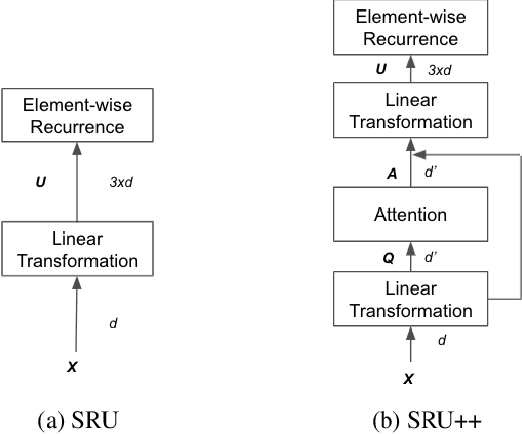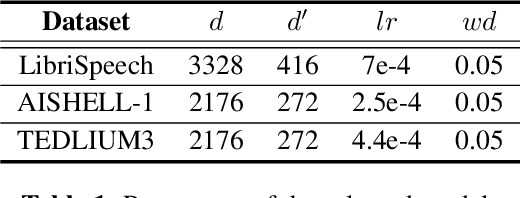SRU++: Pioneering Fast Recurrence with Attention for Speech Recognition
Paper and Code
Oct 11, 2021



The Transformer architecture has been well adopted as a dominant architecture in most sequence transduction tasks including automatic speech recognition (ASR), since its attention mechanism excels in capturing long-range dependencies. While models built solely upon attention can be better parallelized than regular RNN, a novel network architecture, SRU++, was recently proposed. By combining the fast recurrence and attention mechanism, SRU++ exhibits strong capability in sequence modeling and achieves near-state-of-the-art results in various language modeling and machine translation tasks with improved compute efficiency. In this work, we present the advantages of applying SRU++ in ASR tasks by comparing with Conformer across multiple ASR benchmarks and study how the benefits can be generalized to long-form speech inputs. On the popular LibriSpeech benchmark, our SRU++ model achieves 2.0% / 4.7% WER on test-clean / test-other, showing competitive performances compared with the state-of-the-art Conformer encoder under the same set-up. Specifically, SRU++ can surpass Conformer on long-form speech input with a large margin, based on our analysis.
 Add to Chrome
Add to Chrome Add to Firefox
Add to Firefox Add to Edge
Add to Edge